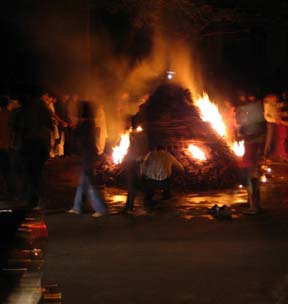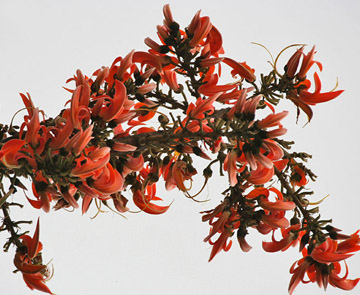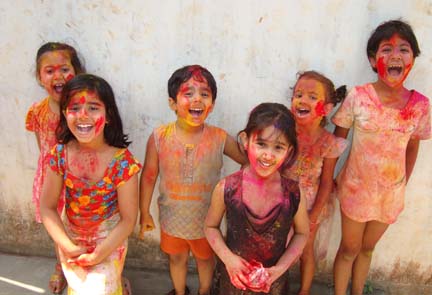Play a Safe Holi This Year!
 The festival of Holi is almost at our doorsteps only a few days away closely followed by Rang Panchami. Both these festivals are the most favorite occasions for the young and the young at hearts equally. Holi is celebrated in India and Nepal in the month of Falgun and it marks the beginning of sultry hot summer season. Everywhere in India, especially in the North, West and East it is celebrated with a lot of fervour and enthusiasm. The main celebrations of the festival involve playing in coloured water and spraying colours over friends and relatives. No one is spared. All the holi enthusiasts are seen coloured in a splashing rainbow of colours from red, pink, green, yellow, blue to silver and gold etc. Some are even seen painted in black. Everywhere you see, the atmosphere is full of bright and beautiful colours.
The festival of Holi is almost at our doorsteps only a few days away closely followed by Rang Panchami. Both these festivals are the most favorite occasions for the young and the young at hearts equally. Holi is celebrated in India and Nepal in the month of Falgun and it marks the beginning of sultry hot summer season. Everywhere in India, especially in the North, West and East it is celebrated with a lot of fervour and enthusiasm. The main celebrations of the festival involve playing in coloured water and spraying colours over friends and relatives. No one is spared. All the holi enthusiasts are seen coloured in a splashing rainbow of colours from red, pink, green, yellow, blue to silver and gold etc. Some are even seen painted in black. Everywhere you see, the atmosphere is full of bright and beautiful colours.
Harmful Effect of These Colours
But how safe are these colours? Apparently not very safe, as every year after the festival is over, many are reportedly injured by the toxic chemicals present in these colours, ranging from minor injuries such as skin rashes and allergies to major ones like loss of vision, deafness etc. In few incidents even deaths have been reported. Even the traditionally used pink powder that is called Gulal is not safe. Many people do not like to get wet and hence stick only to gulal but it contains silica and sometimes even asbestos both of which are very toxic and harmful. Due to metal in its composition, Gulal has been known to cause illnesses such as various skin diseases, asthma, and eye problems. Some colours that are very bright and flouroscent (commonly called factory colours) are mostly preferred by the young. But these colours are very hard to remove and cause mild-to-severe skin rashes and other problems. They also create a very foul odour and yet are favoured by many all in the spirit of Holi. Silver colours are also known to contain toxic chemicals and yet are preferred by many. This is irresponsible behaviour in my opinion. In spite of being knowledgable about their harmful effects on us physically as well on the environment, use of such colours is condemnable.
Why are we still indulging in these colours? Why not make our own colours from natural sources and try and make this Holi and Rang Panchami a safer one, safe for us as well as for the environment. We only need to look around and we will see so many alternative options for preparing safe colours.
Natural Methods of Preparing Colours
Mother Nature has been very generous and has blessed with abundant colours in various forms. There are many ways of preparing ecofriendly and safe colours from various leaves, flowers, roots etc. Here are some ways on how to get colours to play with this holi.
Green Colour: Natural green colour can be obtained by using Mehendi leaves, spinach, coriander and mint leaves. Dry mehendi leaves in shade and crush it to fine powder and mix it with chick pea flour(besan) and use this powder. Not just a great alternative to chemical colour, it will help improve your skin tone too. Alternatively you may boil fresh mehendi leaves in water and use the water which will give brownish to greenish tinge. For darker green colour grind fresh spinach or mint or coriander leaves and mix in water. This is a really safe and naturally beautifying for your skin too.
Yellow Colour: This is the time when you might still get fresh turmeric in the market which is the best way to get a lovely yellow colour. Bring home fresh turmeric, chop in fine pieces and soak in water for a few hours, then strain to get beautiful yellow colour that is not just safe but really good for your skin as well. Or if you do not find any fresh turmeric, just use the dried turmeric powder from your kitchen, either use the powder as it is or mix it with chick pea flour or in multani mitti, a type of clay used to prepare beautifying face packs. Alternatively, soaking dried marigold flowers in water for a few hours and then straining will also give you nice yellow colour. These flowers are available in India all through the year and you can save these flowers from the torans put up on the doors of your homes.
Red Colour: Pick some red hibiscus flowers and dry them in shade. Crush these flowers to fine powder and mix with flour or soak the powder in water to get nice red colour. Alternatively, saving pomegranate peels and boiling them in water will also give a dark red tinge. To get even darker and more beautiful tinge of red, just grate some beetroots and soak them in water for a couple of hours. Then squeeze and strain it to get lovely red colour.
Blue Colour: This is the flowering season for jacaranda trees which give beautiful blue, bell-shaped flowers. If you come across a jacaranda tree, you will find the ground beneath it covered with lovely blue flowers, pick these up and dry them. Then crush the flowers to a fine powder and use this to colour your friends blue.
Black Colour: To get black colour, boil dried amla fruits (Indian gooseberries) in an iron wok and keep them overnight in the boiled water. Next day, strain the liquid and add plenty of water to it which will be black in colour. Besides this, you can use 'hirda' or 'haritaki' (Terminalia chebula) in the same manner to get dark brown to black colour. Both these ingredients, amla and hirda are easily obtainable from shops that sell traditional herbs.
 Orange Colour: To get orange colour, use the stocks of parijatak flowers, Nyctanthes arbor-tristis which is commonly called as Coral Jasmine. These are beautiful white flowers with bright coral stalks. The dried stalks of these flowers when soaked in water will give beautiful orange colour for your holi celebrations. The palas or palaash trees (Butea monosperma) that flower during this season all over India can also be used to make orange to saffron colour.
Orange Colour: To get orange colour, use the stocks of parijatak flowers, Nyctanthes arbor-tristis which is commonly called as Coral Jasmine. These are beautiful white flowers with bright coral stalks. The dried stalks of these flowers when soaked in water will give beautiful orange colour for your holi celebrations. The palas or palaash trees (Butea monosperma) that flower during this season all over India can also be used to make orange to saffron colour.
There are other things which can be used to prepare colours, such as raktachandan or red sandalwood which can be used to prepare reddish brown colour. Other herbal ingredients such as manjishta (Rubia cordifolia) and bark of the Khair tree (Acacia catechu) from which kattha (an ingredient to bring colour to betel leaf) is made, can be used to make brown colours. These are also available in most stores selling herbal medicines. You only need to keep an open mind and do a little research as well as take some efforts prepare these ecofriendly colours.
Being Sensitive Towards Environment
Celebrations are a part and parcel of our lives and are necessary to bring colour to our otherwise mundane routine. But while we are out enjoying ourselves, we must also spare a thought for those who are striving to save the environment and do our bit towards a safer and greener environment. We can contribute to this good cause by observing some of the following things:
This holi let us not cut down trees mindlessly to be burned down on the night of Holi bonfire. We can instead collect bits and pieces of old wooden furniture, coconut husks and shells, saw dust etc. There are some mischief mongers who throw plastic, thermocol stuff inside the bonfire which releases noxious fumes and foul odorous gases. Let us be extra vigilant and see to it that no one does such a thing. It is essential that we maintain the purity and sanctity of the rituals not just for the sake of performing rituals, but also to keep the environment safe and free from pollution. We can plant a tree each holi and nourish it to a healthy growth on this holi day.
Do not waste water. When more than half of Maharashtra and some other states in India are reeling with a severe famine, let us try to save water. I know that playing holi without water is something that is unimaginable, yet we have to make an effort. Instead of splashing buckets of water on others, let us stick to the pichkaris and spray water judiciously. Celebration or no celebration we have to remain conscious of civic sense hence stick to these resolutions. Try to save money that you would otherwise spend on colours and parties and give them to a drought-relief fund.
Do not create plastic trash by using small plastic bags filled with water and thrown on others. Similarly try to not use the water balloons as these too add to the plastic trash in subsequently large quantities.
These are only a few things that I felt were needed to change the way we celebrate holi. You can also think of something on similar lines and endeavour to make this year's holi a safe and enjoyable day for yourself and for others. So happy holi to you all and go ahead and
Colour Your Life Red!

Image Source: All images from Wikimedia
Like it on Facebook, Tweet it or share this article on other bookmarking websites.

